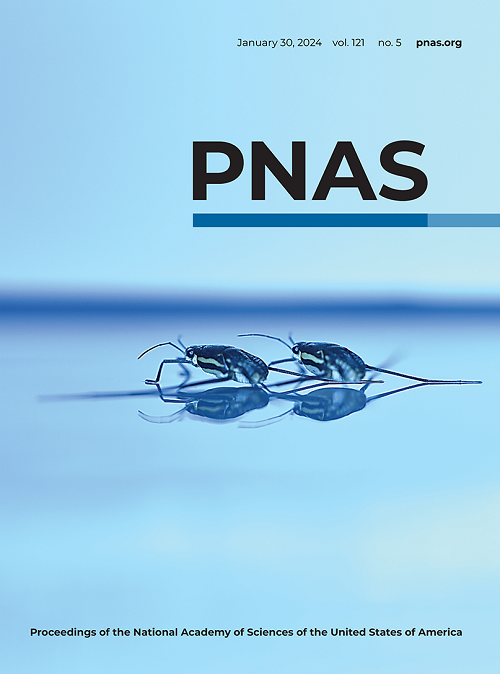Physics of notochord tube expansion in ascidians
IF 9.4
1区 综合性期刊
Q1 MULTIDISCIPLINARY SCIENCES
Proceedings of the National Academy of Sciences of the United States of America
Pub Date : 2025-06-05
DOI:10.1073/pnas.2419960122
引用次数: 0
Abstract
Interaction of cells and the surrounding lumen drives the formation of tubular system that plays the transport and exchange functions within an organism. The physical and biological mechanisms of lumen expansion have been explored. However, how cells communicate and coordinate with the surrounding lumen, leading to continuous tube expansion to a defined geometry, is crucial but remains elusive. In this study, we utilized the ascidian notochord tube as a model to address the underlying mechanisms. We first quantitatively measured and calculated the geometric parameters and found that tube expansion experienced three distinct phases. During the growth processes, we identified and experimentally demonstrated that both Rho GTPase Cdc42 signaling-mediated cell cortex distribution and the stability of tight junctions (TJs) were essential for lumen opening and tube expansion. Based on these experimental data, a conservation-laws-based tube expansion theory was developed, considering critical cell communication pathways, including secretory activity through vesicles, asymmetric cortex tension driven anisotropic lumen geometry, as well as the TJs gate barrier function. Moreover, by estimating the critical tube expansion parameters from experimental observation, we successfully predicted tube growth kinetics under different conditions through the combination of computational and experimental approaches, highlighting the coupling between actomyosin-based active mechanics and hydraulic processes. Taken together, our findings identify the critical cellular regulatory factors that drive the biological tube expansion and maintain its stability.海鞘脊索管扩张的物理学
细胞与周围管腔的相互作用驱动管状系统的形成,管状系统在机体内起运输和交换作用。人们已经探索了管腔扩张的物理和生物机制。然而,细胞如何与周围的管腔沟通和协调,导致管不断膨胀到一个确定的几何形状,是至关重要的,但仍然难以捉摸。在这项研究中,我们利用海鞘脊索管作为模型来解决潜在的机制。我们首先定量测量和计算几何参数,发现管的膨胀经历了三个不同的阶段。在生长过程中,我们发现并实验证明Rho GTPase Cdc42信号介导的细胞皮层分布和紧密连接(TJs)的稳定性对管腔开放和管扩张至关重要。基于这些实验数据,建立了一个基于守恒定律的管膨胀理论,考虑了关键的细胞通讯途径,包括通过囊泡的分泌活性、不对称皮质张力驱动的各向异性管腔几何以及TJs门屏障功能。此外,通过实验观测估计管材膨胀的关键参数,通过计算和实验相结合的方法,成功预测了不同条件下管材生长动力学,突出了基于肌动球蛋白的主动力学与水力过程的耦合。综上所述,我们的发现确定了驱动生物管扩张并保持其稳定性的关键细胞调节因子。
本文章由计算机程序翻译,如有差异,请以英文原文为准。
求助全文
约1分钟内获得全文
求助全文
来源期刊
CiteScore
19.00
自引率
0.90%
发文量
3575
审稿时长
2.5 months
期刊介绍:
The Proceedings of the National Academy of Sciences (PNAS), a peer-reviewed journal of the National Academy of Sciences (NAS), serves as an authoritative source for high-impact, original research across the biological, physical, and social sciences. With a global scope, the journal welcomes submissions from researchers worldwide, making it an inclusive platform for advancing scientific knowledge.

 求助内容:
求助内容: 应助结果提醒方式:
应助结果提醒方式:


